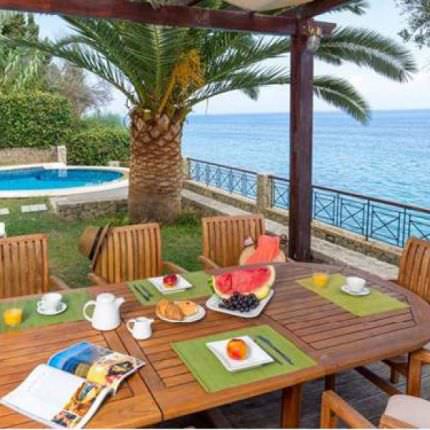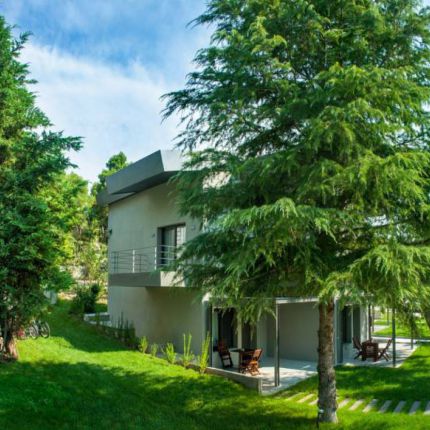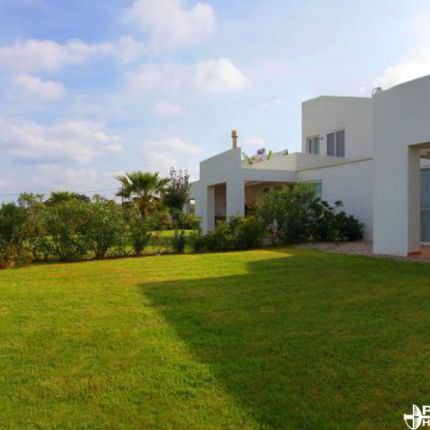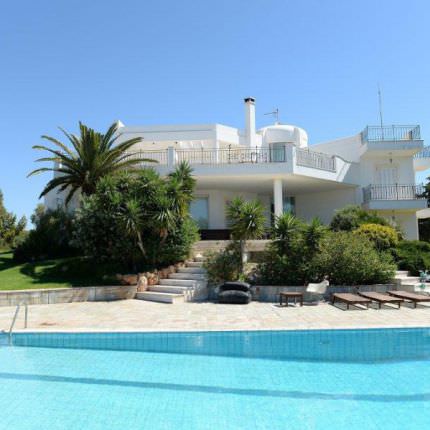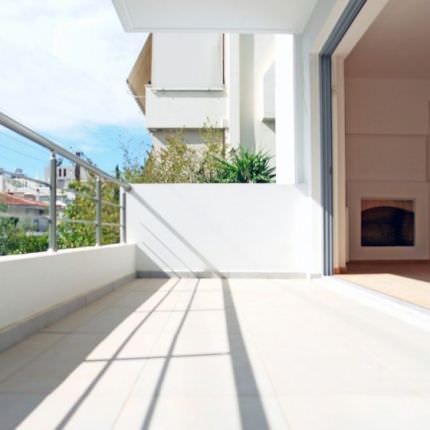Attiki is the part of Greece bordering with Central Greece on northand occupying south of Greece.
Capital of Greece - Athens, main port of the country - Piraeus,Marathon, antique temples and Byzantine monasteries are situated on the territory of Attiki. Rich landscape is the distinctivefeature of this part where you will enjoy huge and beautiful mountains, pureand sky-blue sea, clean and spacious beaches.

Sky-blue sun of Attiki, beautiful beaches of Athens and turquoise sea will make unbelievableimpression on you. South-eastern sea side of Athens, known as "Athenian Riviera" or "Apollon`s coast" stretches from Piraeusport to the Cape Sounion. There are prestigious suburbs, such as: Paleo Faliro, Kalamaki, Glyfada, Voula,Varkiza, Lagonisi stretching along the whole sea coast. Only here you willfind the most expensive hotels and exclusive villas.
Glyfada is one of the most prestigious suburbs of Athens situated only in 20 min drive by car.Here you will find best shops and boutiques, best Greek restaurants andtaverns, beautiful beaches and sea club with yacht bay, one of the most famousgolf - club in Greece, night clubs, bars and entertainment centers.

Vouliagmeni is also prestigious suburb of Athens situated in 30 min drive by car from Athens. This suburb isone of the most beautiful resorts in Greece. Small cape dividesVouliagmeni coast into two bays with beautiful beaches. Here is situated thepopular Vouliagmeni lake the watertemperature of which is 22-25 C all the year round. There are a lot ofnumerous restaurants and taverns with wide choice of fish, seafood, freshvegetables and fruits.
Picturesquebays of Varkiza, modern hotel complexesof Lagonisi, beaches of Anavissos offer you exquisite rest.
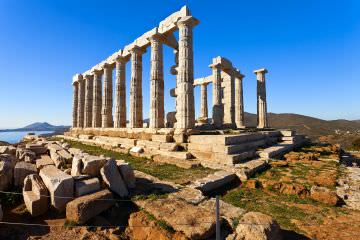
Cape Sounion is thesouthernmost tip of Attiki situated in 68 km from Athens. So, if you take the road going along SaronicGulf, you will reach the CapeSounion in one hour andwill enjoy the picturesque view from there. There were two ancient temples on this place, one dedicated to Athena (ofwhich only the foundations remain) and the other the famous one to Poseidon. Thetemple at Sounion, therefore, was a venue where mariners, and also entirecities or states, could propitiate Poseidon, by making animal sacrifice, orleaving gifts.
The temple of Poseidon was constructed in 440 B.C., over the ruins of a templedating from the Archaic Period. It is perched above the sea at a height ofalmost 60 m. The design of the temple is a typical hexastyle. Only 15 columns of 34 of the Sounion temple remainedtoday. Here you will enjoy unbelievablybeautiful sunset that attracts thousands of tourists from all over the world.They say if you make a wish here, for sure it will come true.
Eleusina town is situated in 22 km to the west of Athens. In ancient timesElefsina was the third biggest town in Greece. Inthe Classical period of Greece,from as early as 1700 BC up to the era of the Roman Empire, Eleusina, or Eleusis, was the site ofthe Eleusinian Mysteries, or the Mysteries of Demeter and Kore. These Mysteriesrevolved around a belief that there was a hope for life after death for thosewho were initiated. Traditionally in Ancient Greece there was no positiveoutlook of death, one would cross the River Styx and enter Hades, however theEleusinian Mysteries gave Greek speakers of that time a hope of a better lifein Hades. Such a belief was cultivated from the introduction ceremony in whichthe hopeful initiates were shown a number of things including the seed of lifein an ear of corn. The Mysteries are attributed to Demeter and her daughterKore, or Persephone, and were created while Demeter searched for her lostdaughter who had been abducted by Hades.
Kaisariani monastery was built in the 11th century on the slope of Hymettos Mountains, over the ruins of a 5th-century Christian church, itself builtover the temple. The monks supported themselves by keeping bees and selling thehoney, much as some religious orders today sell jams or liqueurs. Themonastery's kitchen and refectory, which now house sculptural fragments, are onthe west side of a paved, flower-filled courtyard. To the south, the old monks'cells and a bathhouse are being restored (exploration at your own risk isusually permitted). The well-preserved church, built like so many others in Greece in theshape of a Greek cross, has a dome supported by four ancient Roman columns.Most of the frescoes are relatively late, dating from the 17th and 18thcenturies; the distinctive bell tower is from the 19th century.
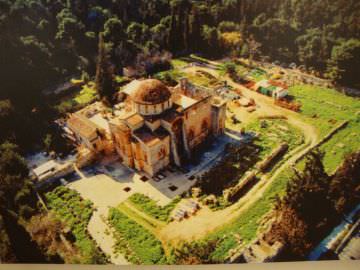
Daphni monastery issituated in 11 km from Athens and is theworldwide monumentof Byzantine period. Daphni Monastery was greatly expanded in the11th century, when the Byzantine Empire was atits peak. Very little of the monastic buildings (which included a refectory,dormitories and a well) survive, but its domed church is still standing. Ithas, however, been repeatedly repaired and restored after major damage byinvaders and earthquakes. The Crusaders captured Constantinoplein 1204 and Daphni monastery was sacked by Frankish crusaders in 1205. Twoyears later Daphni was given to the Cistercians from the Abbey of Bellevaux.The Catholic monks added a cloister and the twin Gothic arches in front of thechurch's west entrance, but did not alter the mosaics.
Modern suburbs, such as: Vravrona, Nea Makri and Mati are situated in 35-40 km from Athens. You will besurprised by variety of vineyards, olive trees, pine trees, beautiful beachesand gorgeous nature of these places. Small resort Nea Makri was the firstresort appeared in Attiki. This area is popular not only among tourists butGreeks. There are a lot of night clubs,bars, restaurants and taverns.
Ancient Marathon occupied theVrana village that is situated to the south of modern Marathonas. The Battle of Marathon of 490 B.C. was an important moment for the victorious Athenians. This was a momentous event sinceit was the first Greek victory in the Persian Wars. Then the Greeks preventeda surprise Persian attack on Athensby a quick march back to the city to warn the inhabitants. Supposedly,a messenger, Pheidippides, ran about 25 miles (42 km and 195 m) from Marathonto Athens, toannounce the defeat of the Persians. At the end of the march he died ofexhaustion. So, this was the origin of marathon distance. When the modern Olympic games were inaugurated in 1896 in Greece, the legend ofPheidippides was revived by a 25 mile (42 km and 195 m) run from Marathon Bridgeto Olympic stadium in Athens.Traditionally the final event in the Olympics, the first organized marathonon April 10, 1896 was especially important to all Greeks. Greece washosting those first modern Olympic Games.
Northern suburbs of Athens,such as: Psihiko, Philotei, Marousi,Kifisia, were built up in 20-s of 20th century. There areexclusive villas and residences here built in classic English style. There isalso Olympic sport center in Marousi.
One of the most beautiful northern suburbs of Athens is Kifisia with its luxurious houses and residences, huge tradecenters, best shops and business centers. Here are the most expensiverestaurants and cafes, boutiques, beauty centers and there is also NaturalHistory Museum.



